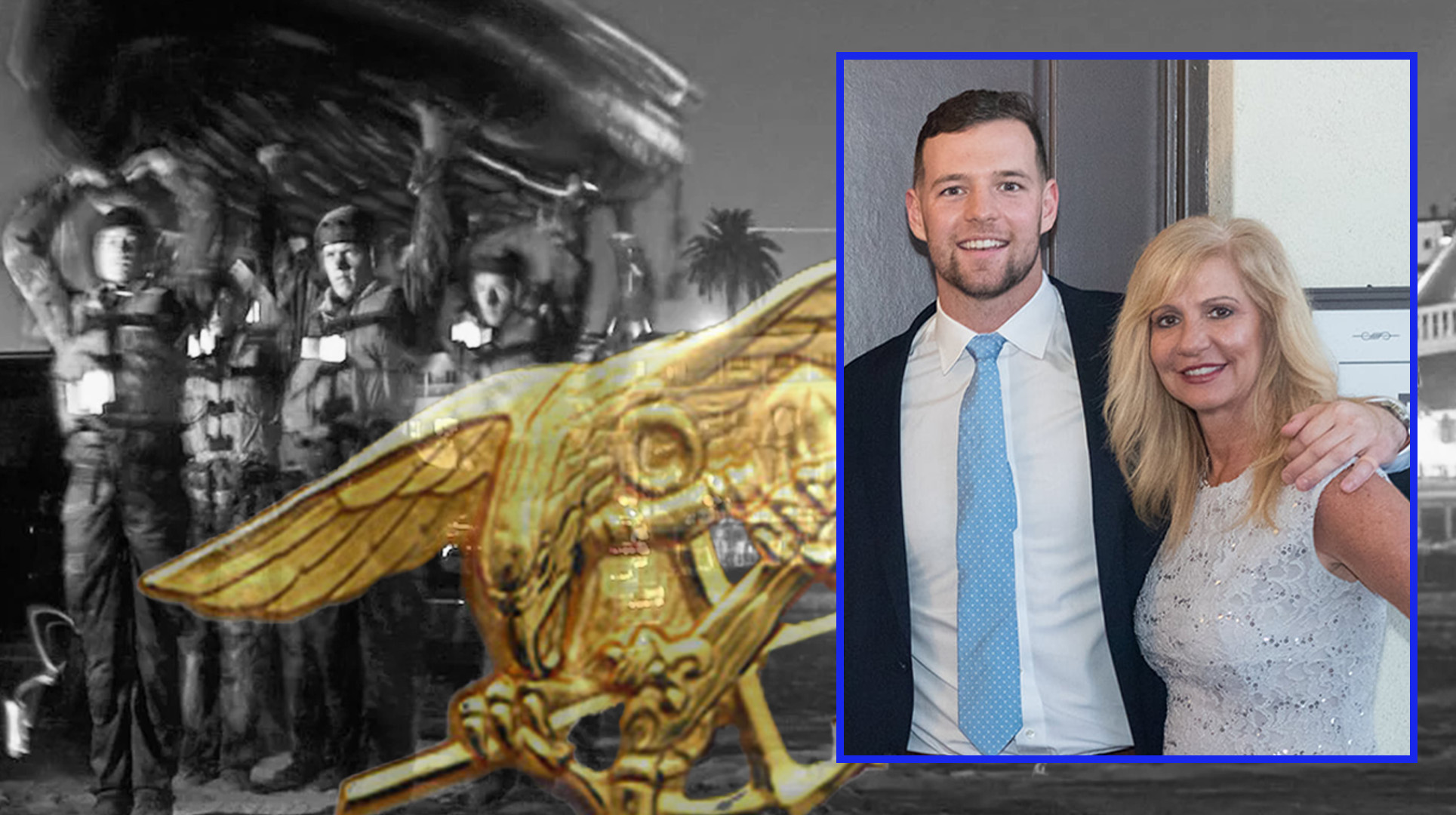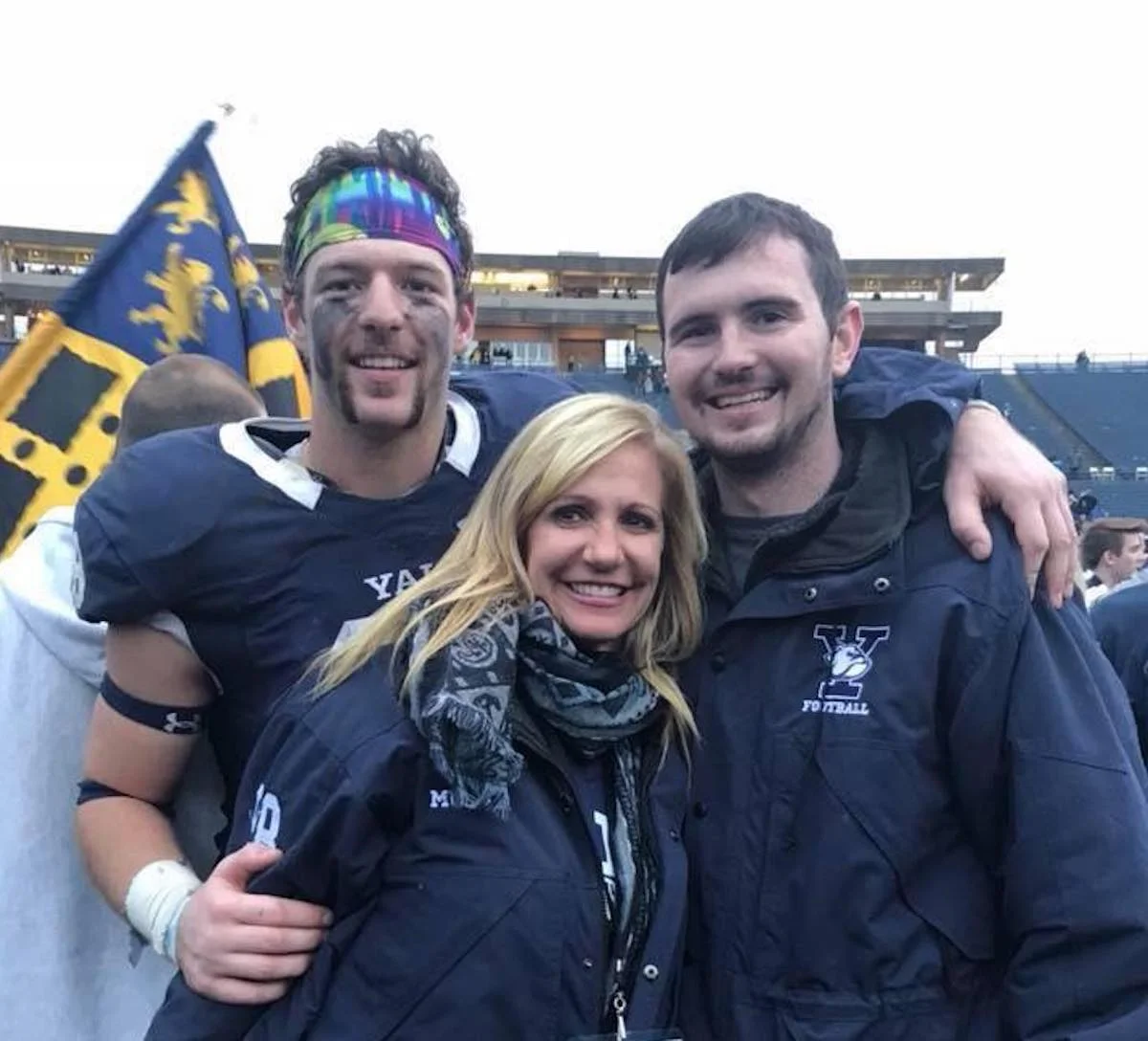

A months-long investigation released this week paints a dark picture of the training conditions at the Navy’s grueling SEAL selection course — specifically, it’s Hell Week portion — in late 2021 and early 2022.
SEAL instructors, the report found, were “hunting the back of the pack,” picking off students they deemed too slow or weak for the Navy’s infamous Basic Underwater Demolition/SEAL training, or BUD/S. And those instructors believed they were acting on their boss’s orders, or at least had tacit approval. Referencing a hill that would-be-SEAL students climb to finish the infamous crucible of Hell Week, a top SEAL commander told instructors: “Zero is an okay number on the berm.”
Kyle Mullen wasn’t at “the back of the pack” and he was determined to be “on the berm” at the end of Hell Week. At 6-foot-3, the former college football player was, classmates later told his mother, Regina, one of the strongest students in BUD/S Class 352 in January and February 2022.
But as he developed pneumonia in the middle of Hell Week, the safety investigation found, the school’s “no slack” training culture and lax supervision led to a long list of missed warning signs of Mullen’s increasingly dire condition, despite multiple medical checks. Hours after the class “secured” Hell Week on the morning of February 4, 2022, he was found unresponsive in the barracks by classmates and was pronounced dead at a local hospital.

None of it came as a surprise to his mother.
“It’s all what I specifically knew already but now it’s admitted,” Regina Mullen told Task and Purpose Thursday after a one-on-one briefing from Navy officials in which they laid out the report’s findings. “My main thing now is accountability. In the civilian world, if you read the presentation that they gave me, people would say, ‘No one’s in trouble yet?’ It’s nothing, a year and a half later, for all the failures. I mean, it’s egregious failures.”
Kyle Mullen’s final hours
Halfway through Hell Week, the report found, Kyle Mullen began to fall behind on events and cough up brown and pink fluids from his lungs. As the punishing training continued, he developed pneumonia that his instructors and the school’s medics — working under leadership that allowed “complacency and insufficient attentiveness” to creep into the school and its staff — failed to pick up on despite multiple medical checks and warning signs.
Even after Mullen spent the final hour of Hell Week in the back of an ambulance breathing from an oxygen tank, BUD/S medics and instructors sent him back to the barracks with no further medical attention. There, Hell Week survivors were monitored only by junior BUD/S students with no medical training.

In the barracks, before he fell unconscious, Mullen filled a Gatorade bottle with spit-up at least four times and was seen as “delirious” by his fellow students, disappearing into the bathroom for 30 minutes at a time.
At 2 p.m., about the time BUD/S medics went home for the day, a fellow BUD/S student found Mullen in the barracks bathroom, coughing up dark fluid and — hours after completing Hell Week with pneumonia — castigating himself, saying, “I am such a pussy.”
An ambulance was summoned only when an officer in Mullen’s class, who had also survived Hell Week, called 911.
At 5:25 p.m., Mullen was dead.
Training gives way to attrition
The failures that led to Mullen’s death, the report found, started long before Hell Week. Leaders at the top of BUD/S had allowed an “organizational drift” across the program, in which those responsible for the safety of students switched from “a production mindset, one of building special operators, to an attrition mindset.”
BUD/S instructors took their cues from those shifts, particularly under a new leader in late 2021 of BUD/S’s brutal “1st phase,” and began pushing classes harder and with less rest than rules allowed. The new leader’s name was redacted in the report released by the Navy.
In all, over a six-month period in the winter of 2021-22, BUD/S classes experienced attrition rates more than 30% higher than historical averages and well below the pace that Naval Special Warfare Command and the wider Navy expect the school to produce new SEALs.

While a typical SEAL class would see less than half of its candidates drop out prior to the commencement of Hell Week, an early 2022 class lost nearly 80% before Hell Week.
Meanwhile, medics charged with watching out for students were under-trained and divided between two commanders.
“Candidates were placed at significant risk by a medical system not trained, organized, integrated, or drilled to ensure continuous effective medical monitoring or care,” the report found.
Chain of command issues
The report names two officers at the top of the BUD/S chains of command as ultimately responsible for conditions at the school: Capt. Brian Drechsler, Commander of the Naval Special Warfare Center, the parent organization that oversees NSW training; and Capt. Bradley Geary, the commander of the Naval Special Warfare Basic Training Command, or BTC, which is responsible for BUD/S and falls under the NSWC.
“These failures were the result of absent or insufficient written guidance, ineffective oversight by both Basic Training Command and Naval Special Warfare Center medical and command leadership, and uninformed risk decisions made at the wrong level,” the report said.

The report does not, to Regina Mullen’s frustration, recommend punitive action or criminal charges against the officers. Several senior SEALs, including the overall commander of Naval Special Warfare, Rear Admiral Hugh Howard, were on hand to see Mullen’s Class 352 “secure” Hell Week.
Howard told investigators he shook Mullen’s hand.
“I want to know how the admiral and the commander are standing there and seeing the condition of the men,” Mullen said. “And the medical team goes home. They have a duty in the military code of justice to look out for the safety of the men and right there, that should be a dereliction of duty.”
As a safety report, the investigation was not focused on assigning punitive or criminal responsibility.
Instead, the report’s 200 pages fault the processes and policies behind the military’s most famous special operations school, from the combat-hardened enlisted SEAL instructors and retired contractors who spend their days pushing students in the sand at Naval Amphibious Base Coronado to their commanders who ultimately are responsible for sending 175 graduates to operational SEAL teams each year, the report says.
“While the safety program met minimum administrative standards, it was not suitably robust for the risk inherent to the BUD/S training program,” the investigation found. “Complacency and insufficient attentiveness” to training rules and the intent of BUD/S, the report found, created an “unrecognized accumulation of risk across multiple systems designed to provide safe, effective training to BUD/S candidates.”
Fatal shortcomings
Though Mullen was found to have an enlarged heart and evidence of Performance Enhancing Drugs were found in his car after his death, the report specifically absolves Mullen of contributing to his own death, instead focusing on the series of mistakes both big and small by BUD/S staff and leaders that led to Mullen’s death.
Among the report’s findings were:
- The medical coverage of rigorous early BUD/S training, and particularly Hell Week, was not sufficient for the high levels of sickness and injuries the training routinely produces. Only one medic was assigned to each training event, or evolution, and the training of those medics was found to be “poorly organized, poorly integrated and poorly led.” Though most were competent medics, with a mix of active duty and contractors, the report found none had completed mandatory BUD/S-specific training, even though some had been on duty at the school for two years (two medics are now assigned to every BUD/S evolution, the report said).
- After a cursory medical check at the end of Hell Week, in which Mullen’s pneumonia went unnoticed, the Hell Week class was sent to the barracks with no medical personnel present or even accessible. The school’s medical clinic that serves BUD/S students closed at 2 p.m. and was not scheduled to reopen until the next morning. Junior BUD/S students from other classes were charged with overseeing the Hell Week survivors. None had medical training.
- An ambulance was dispatched to the barracks only after an officer in Mullen’s class ignored the insistence of his classmates that they did not require medical care and instead called 911.
- Three other members of Mullen’s class eventually went to the hospital the night after Hell Week. One was intubated.
- Tracking “high risk” students during Hell Week was a spotty process as medics relied on a whiteboard to track struggling students. However, even as Mullen began to develop signs of pneumonia on Wednesday of Hell Week, medics never caught on to his illness, and his name was never put on the high-risk board (medics now use integrated spreadsheets and Wi-Fi equipped tablets to track students during Hell Week, the report said).
- When medics gave Mullen mandatory medical checks during the week, he complained only of a painful knee, which may have distracted medics from diagnosing his pneumonia.
- Medics also appear to have been prone to confuse early signs of pneumonia with swimming-induced pulmonary edema, or SIPE, a cold water-related syndrome that affects many BUD/S students. Though serious and life-threatening if untreated, SIPE generally resolves in healthy young athletes after ending water training and warming up.
- A major error occurred when Class 352 “secured” Hell Week. The medics in the field turned over care for the class to clinic-based medics but did not pass along any information on Mullen’s condition.
- This botched handoff, the report said, was a result of the school’s medical staff being broken into two distinct sections, with separate chains of command. One set of medics supervised training events under the center’s Basic Training Command, or BTC. The other set fell under the medical clinic that covered the entire Special Warfare Training Center. BTC medics followed classes during training, treating hurt or sick students. Clinic medics and staff handled sick calls, physical exams, x-rays, and other care outside of daily training (BTC medics have since been brought under the clinic’s chain of command, the report said).
- In Mullen’s case, when BTC medics following his class during Hell Week realized he was struggling to breathe and spitting up brown fluid from his lungs during the final hours of training, they pulled him into an ambulance and put him on high-flow oxygen. Breathing the oxygen, Mullen recovered enough to discuss playing football at Yale and his affinity for Taylor Swift.
- Medics then returned Mullen to his class for the final “securing” from Hell Week, where his classmates had to help him climb the final berm. Afterward, all members of the class returned to the clinic and were given medical evaluations.
- Those clinic medics were unaware that Mullen had just spent an hour in the ambulance breathing pure oxygen, supervised by BTC medics. Since the oxygen therapy had temporarily improved his deteriorating condition, the clinic medics let him pass with no further evaluation, sending him back to his barracks, where his condition soon turned dire.
The latest on Task & Purpose
- Navy destroyer USS John Finn’s commanding officer fired
- Navy destroyer USS John Finn’s executive officer fired along with ship’s captain
- The long journey home for a Marine veteran killed in Ukraine
- A Norwegian airline is banking on USS Gerald R Ford sailors having lots of unprotected sex
Stolen valor and ‘homeless veterans’: Inside a failed hoax